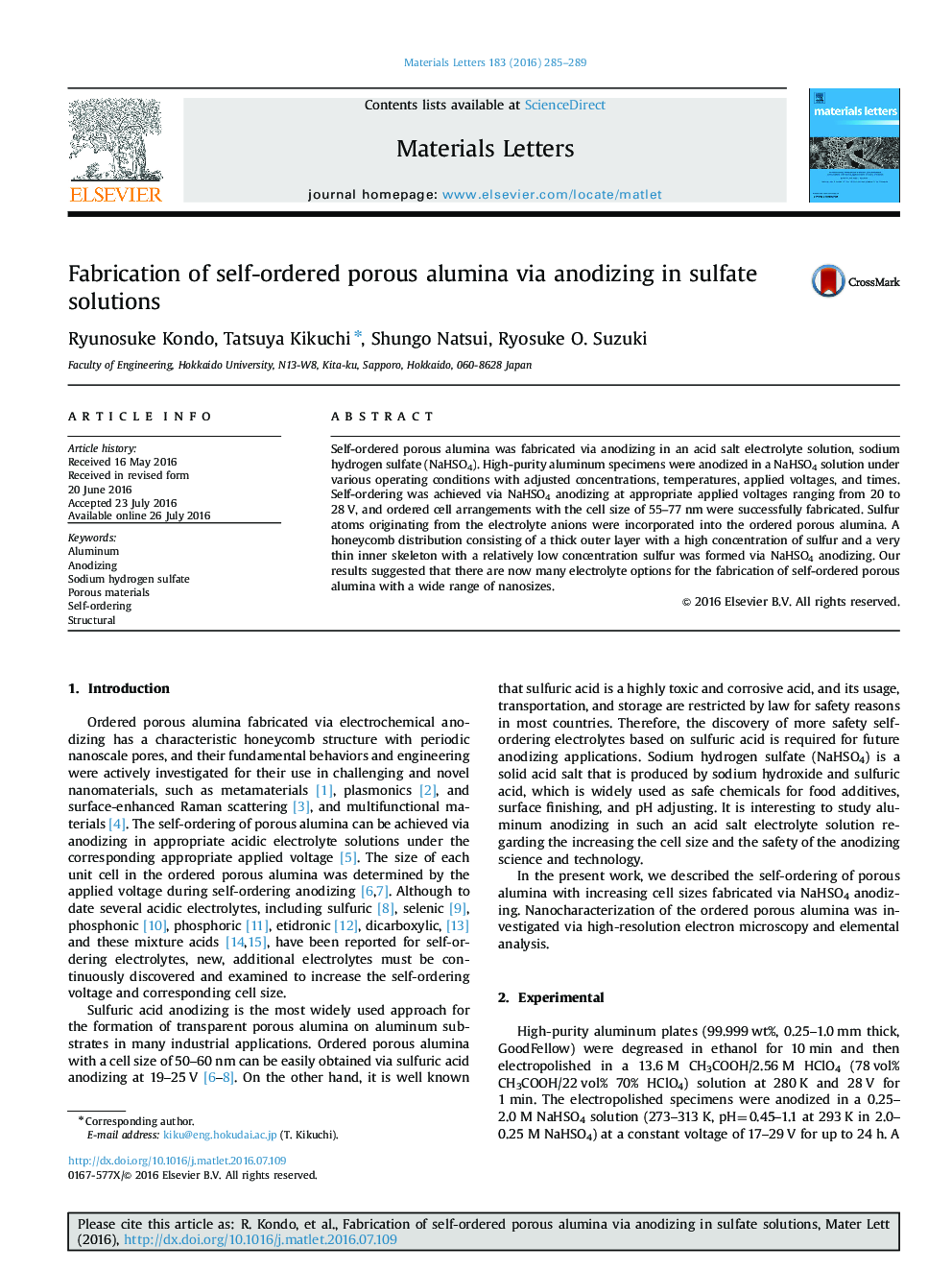| کد مقاله | کد نشریه | سال انتشار | مقاله انگلیسی | نسخه تمام متن |
|---|---|---|---|---|
| 1641100 | 1517205 | 2016 | 5 صفحه PDF | دانلود رایگان |
• Aluminum was anodized in a sodium hydrogen sulfate solution (NaHSO4).
• Porous alumina formed on the aluminum surface via NaHSO4 anodizing.
• Self-ordering was achieved at a constant voltage ranging from 20 to 28 V.
• A honeycomb sodium distribution was formed in the ordered porous alumina.
Self-ordered porous alumina was fabricated via anodizing in an acid salt electrolyte solution, sodium hydrogen sulfate (NaHSO4). High-purity aluminum specimens were anodized in a NaHSO4 solution under various operating conditions with adjusted concentrations, temperatures, applied voltages, and times. Self-ordering was achieved via NaHSO4 anodizing at appropriate applied voltages ranging from 20 to 28 V, and ordered cell arrangements with the cell size of 55–77 nm were successfully fabricated. Sulfur atoms originating from the electrolyte anions were incorporated into the ordered porous alumina. A honeycomb distribution consisting of a thick outer layer with a high concentration of sulfur and a very thin inner skeleton with a relatively low concentration sulfur was formed via NaHSO4 anodizing. Our results suggested that there are now many electrolyte options for the fabrication of self-ordered porous alumina with a wide range of nanosizes.
Figure optionsDownload as PowerPoint slide
Journal: Materials Letters - Volume 183, 15 November 2016, Pages 285–289
